Palazzo Previtera, Sicily: When is a hotel not a hotel? When it’s also a museum, of course
Hetty Lintell visits the utterly unique Palazzo Previtera in the shadow of Sicily's Mount Etna.
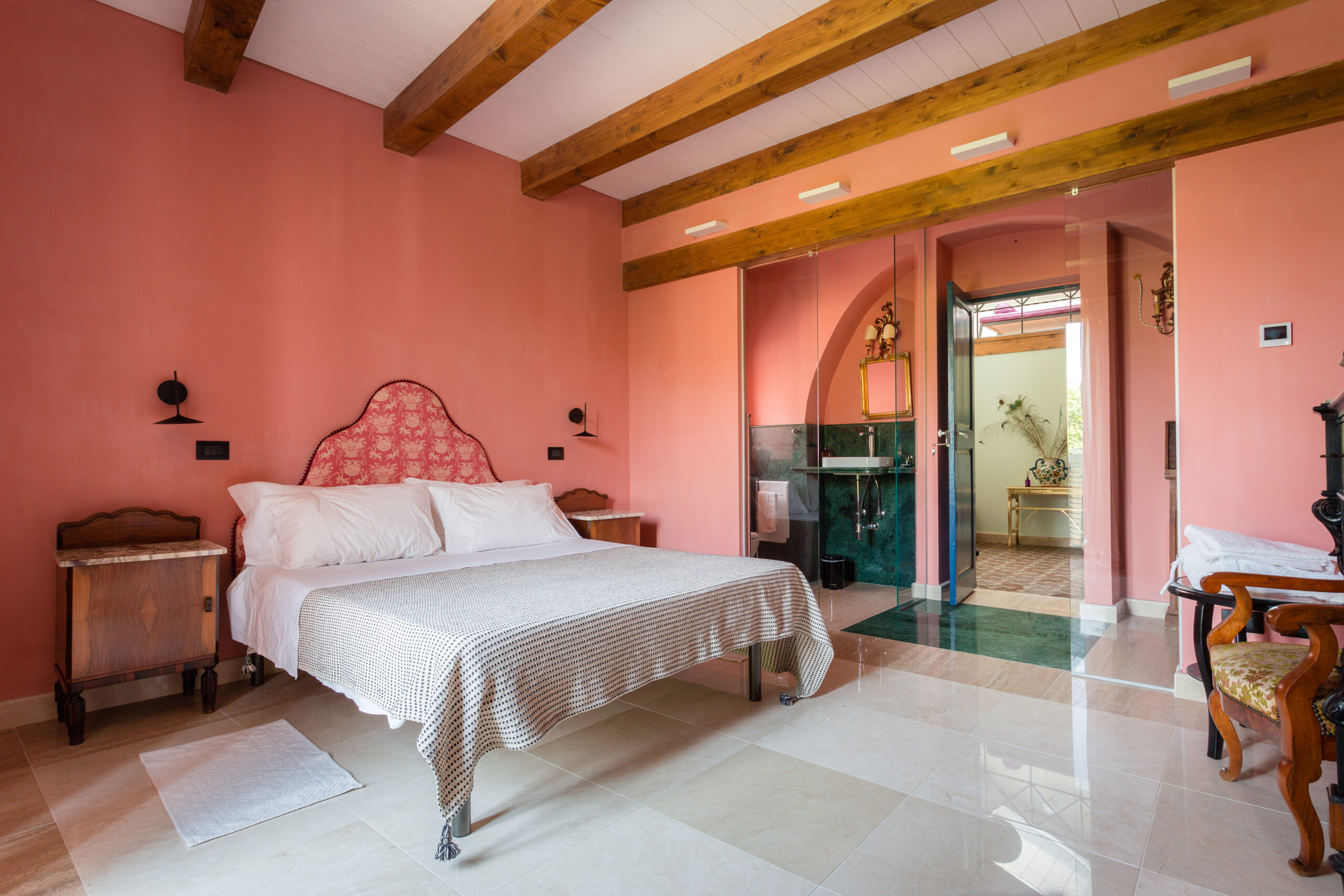

Sicily’s roads are famously hairy, but with just a handful of white knuckle moments (Sicilians love to jostle, but never jostle back) we wound our way from the tourist trap of Taormina — which was heavenly, just don’t go in peak summer — to the sleepy town of Linguaglossa, thrillingly close to Mount Etna.
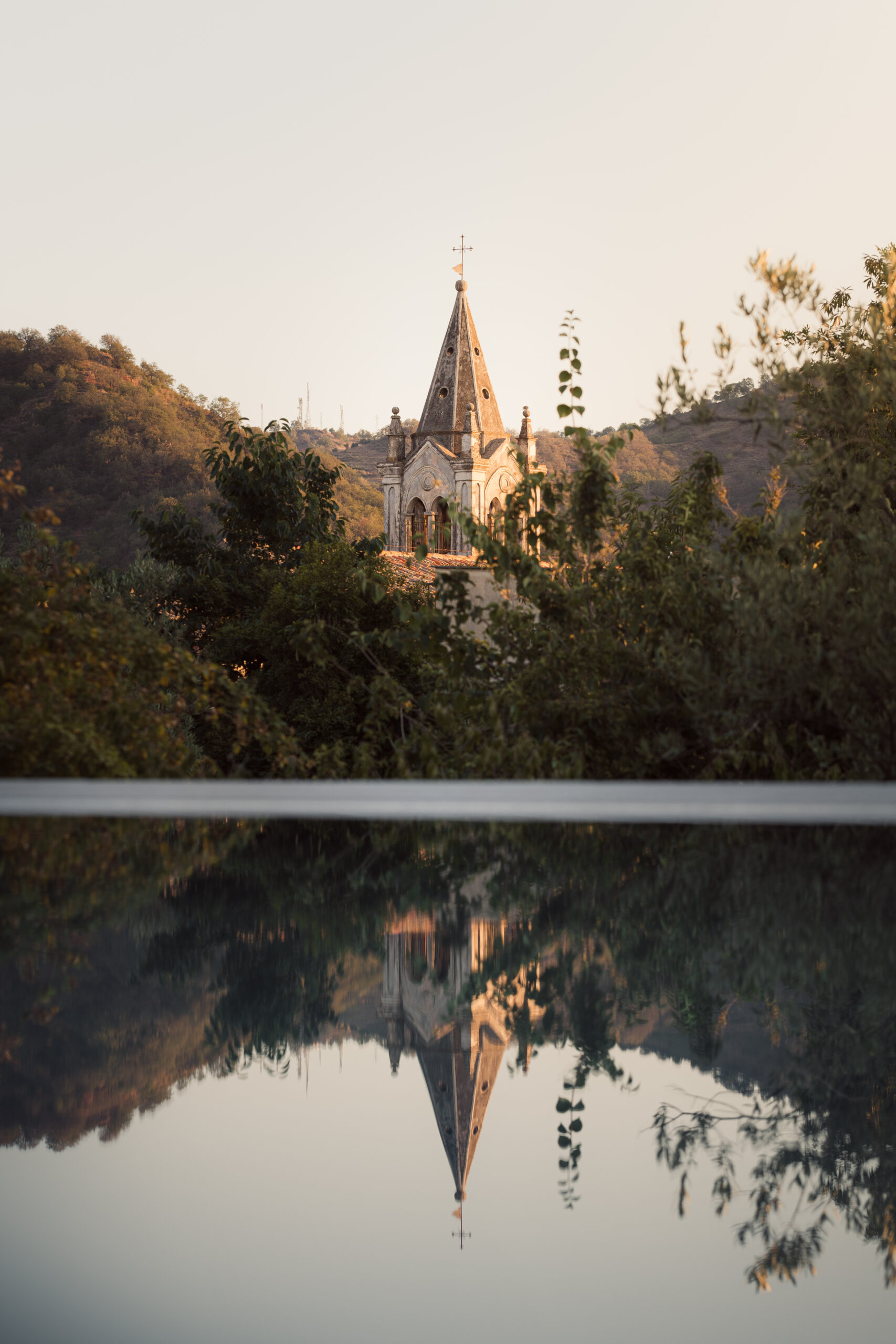
We very nearly didn’t make it, thanks to Etna’s feisty activity which forced the closure of Catania airport, but did make for majestic and fiery moments, which we watched safely from the serene new pool at Previtera.
The Italian palazzo is the Mediterranean's equivalent to our stately home, but I’m relieved to report back that there’s nothing glaringly ostentatious about this fascinating home.
The Previtera family originally came from Acireale — a coastal city in the north-east of the island’s Catania region — and journeyed to Linguaglossa at the end of the 1500s. They were administrators of the Princess of Spadafora, part of a noble Sicilian family whose records date back to the 1200s.

Palazzo Previtera is now owned and run by the charmingly calm Alfio Puglisi, a cultural economist and academic who studied at King's College London, and has a visceral passion for art, culture and history.
The young man has brought a refreshing breath of life to the historic building through clever modern touches and an eye for contemporary style (he collects elegant, mid-century furniture which rubs along fabulously with the 17th century elements).
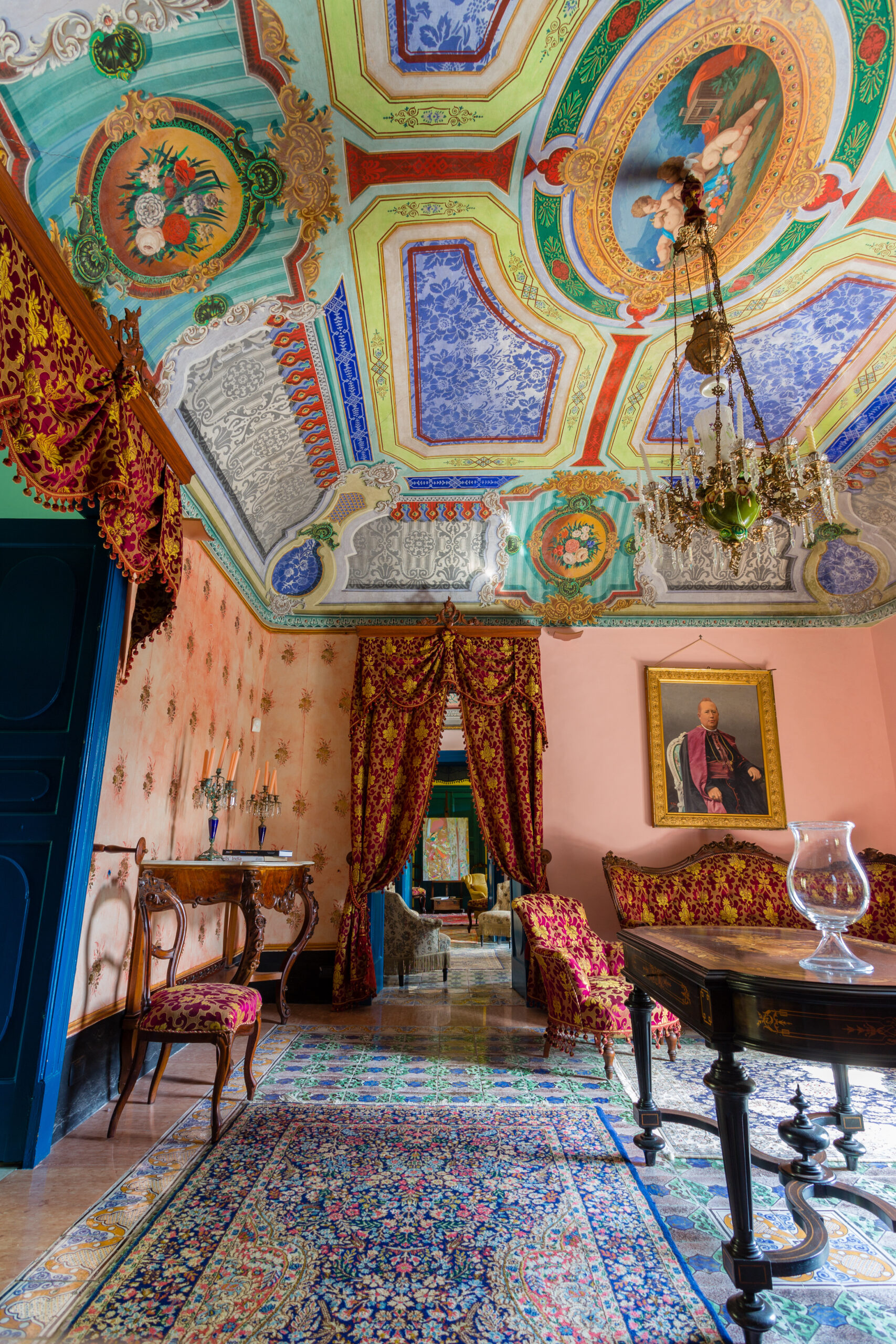
We jumped at the offer of a tour of the private rooms (available to anyone staying; Alfio is on site and always keen to show people around). The house was designed in the Baroque style which arrived in Sicily a century after it hit bigger Italian cities. Why? Because in 1693, swathes of Sicily were all but wiped out in a massive earthquake and, when rebuilding, architects, patrons and residents decided to rebuild in this beautifully ornate style, with all of its requisite curves and flourishes, flamboyant grinning masks and putti.
Exquisite houses, the beauty of Nature, and how to get the most from your life, straight to your inbox.
We danced from room to room, drooling, jaws dropping because everything is (or seems) to be as it was when the rooms were first laid out. Glass cabinets are jammed with precious Murano glass and silver heirlooms. Desks are strewn with documents and important family trees to be poured over.

We stayed in the main house in a room a little like the ones we toured (there were fewer fragile ornaments, thank goodness) and, if at first we took a while to acclimatise, coming straight from air-conditioned modernity the night before, we soon fell head-over-heels for this magical place.
Alfio’s parents still live in the former summerhouse, and you’ll likely spot them darting around, busy with their daily lives, and making the most of the abundant gardens (the family also have homes in Milan and elsewhere, which in my imagination are also very grand indeed).
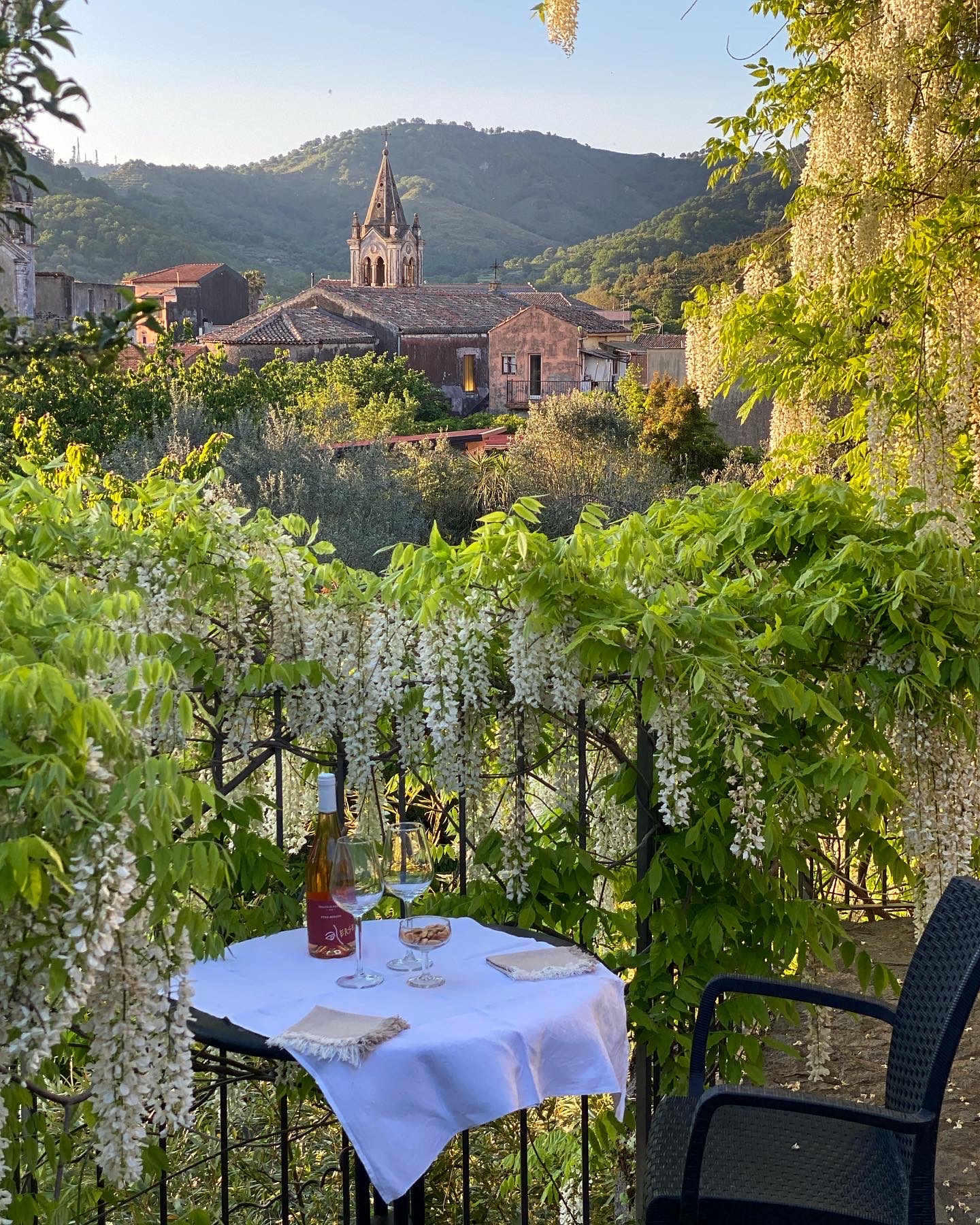
The gardens were so totally unexpected I thought, for a moment, that I’d wandered into Frances Hodgson Burnett book: wrought iron gates reimagined as decorative elements, choked with English rose plants, exotic palm trees and gnarled olive trees older than the house, archways that lead to tiny, stone hideaways — perfect for shaded respite from the hot summer’s sun.
Eclectic Sicilian and Moorish-style (Sicily was under Islamic rules from from the late ninth to 11th centuries) tiles and some cracked here and there, add to the charm.
Work first started in 1908, inside an old lava cave, and developed further after 1950. It is the antithesis of modern-day hotel and hotel gardens where everything is attributed to a ‘name’, brought in new and overly curated. Previtera has grown organically over years and years — something money simply cannot buy.
The fertile volcanic soil, I conclude, must be why everything here — including a dozen rows of vines — thrives even in the throes of August. ‘Is this the most unique spot on the island?’ I muse whilst enjoying a breakfast of local produce, served in the courtyard. The peaches, avocados and hazelnuts all come from their own farms; a cousin makes the pasta.
A holiday to Sicily is an exercise in constant digestion.
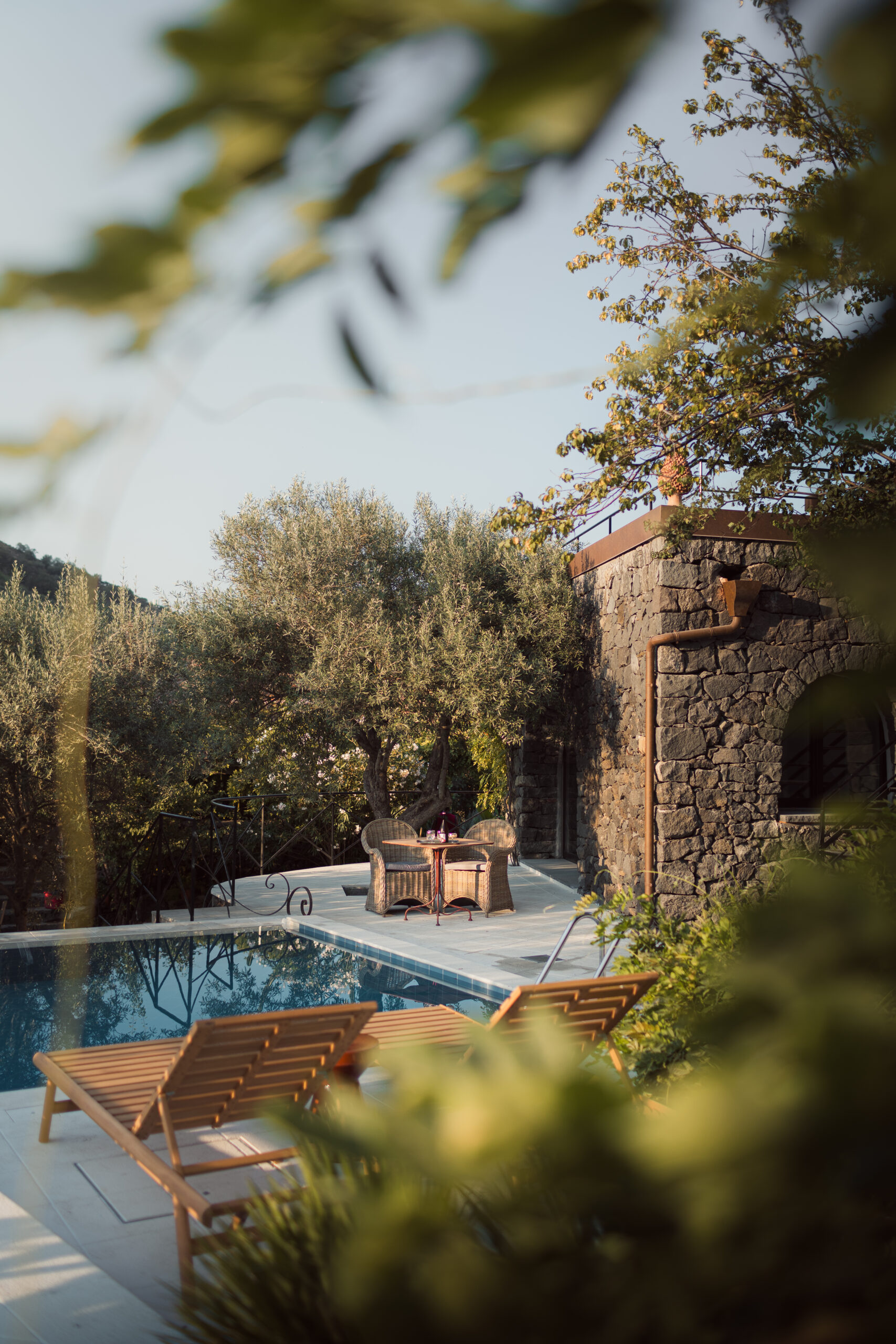
But back to that pool — with its unbeatable views of angry Etna. It’s framed by volcanic rock, bleached to a buttercream hue, and flanked by bamboo sun loungers and khaki green, tasselled umbrellas. This area is overlooked by the hotel’s newest, Art Deco-style suite (above), furniture sourced from another family member who was about to recycle it. ‘No!’ Said Alfio, ‘I’ll have it for the Palazzo’ — and it works wonderfully.
There are other suites hidden amongst the gardens and some cottages which look charming, but occupied, so I don’t see inside. Out of loyalty, we deem our room in the main house to be the most authentic way to experience total immersion in this astonishing hotel.
The Art Deco sleeps two and costs from €350 a night including breakfast; a guest suite sleeping two in the main house costs between €150 and €250 a night with breakfast. Visit www.palazzoprevitera.com or email palazzo.previtera@gmail.com for more information and to book.
Hetty Lintell’s top tips for Sicily
- If Etna is playing ball, land in Catania and head down to the island’s Baroque towns in the south-east. Noto is astonishing. Enjoy cocktails on the rooftop of Gagliardi Hotel for the best views of the town’s architecture. The gin and tonics are excellent too
- Dine at Manna — our favourite meal of the trip
- Avoid Taormina in the busier months, but when you do go, stay at Belmond’s Villa Sant Andrea. This beachside property is a more laid back alternative to their grander hotel up in the town. There’s excellent granita and the best tiramisu in Italy (I know, a big statement!)
- In Linguaglossa town, go for Aperol Spritz’s and nibbles (deep fried olives stuffed with sausage meat) at lowkey Nica Nuci. Alternatively, try the local Messina beer. Dine at Trattoria Linguaglossa — the pesto fuelled pasta monte Etna was perfection — or butcher-cum-restaurant Dei Pennisi
- Drive north to Milazzo port and hop over on a ferry to the laid back Aeolian Islands: Panarea — stay at Hotel Raya — and Salina. The latter stole our hearts and we spent our time there bombing around on rental scooters sniffing out hidden beaches. Stay at Hotel Signum and sample some fare from its captivating Michelin-starred restaurant
Hetty Lintell masterminded the launch of the magazine’s Luxury pages back in 2012 and has overseen them ever since. She also edits Gentleman's Life, Country Life’s annual men’s lifestyle supplement, and styles and art-directs all of the magazine's fashion and still-life shoots. Her real forté, however, is compiling top-notch goodie bags for any party the magazine hosts. The best-dressed member of the team, Hetty can normally be found darting between Bond Street and a photographic studio in East London.
